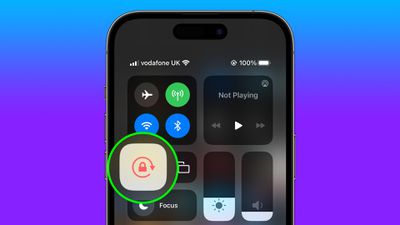异常的工作原理:
try
{
代码处理程序;
if(代码处理发生错误)throw new Exception('抛出一个异常');//使用throw关键字,后面是Exception的一个对象
//需要说明的是php5异常不会自动抛出异常
//抛出异常后下面处理程序不再执行
代码处理程序;
}
catch Exception $e
{
处理异常;
//如:echo 'Exception '.$e->getCode().':'.$e->getMessage().'in'.$e->getFile().'on line'.$e->getLine();
}
看看抛出的异常类系统是如何定义的
class Exception
{
protected $message='Unknown exception';
protected $code=0;
protected $file;
protected $line;
function __construct($message=null,$code=0);
final function getMessage();
final function getCode();
final function getFile();
final function getLine();
final function getTrace();
final function getTraceAsString();//与getTrace()一样,只不过它将格式化为字符串
function __toString();//需要对象的字符串表示时会自动调用这个方法,也就是一旦有echo或print直接输出Exception实例时就会被调用
}
Exception的属性不能在调用代码中直接访问,而必须使用获取方法获得其属性值,只用$message,$code能有用户抛出异常时设置,即给Exception类的构造函数完成。由Exception类可以看出我们完全可以继承Exception类创建我们自己的异常类,在检测错误时不再抛出系统默认的异常对象,而是我们自定义的异常类对象,但我们只能继承构造函数、toString()方法和Exception的属性。
class myException extends Exception
{
function __toString()
{
return '
}
}
在代码中调用我们自定义的异常类
try
{
throw new myException('错误',10);//为了简单,直接抛出自定义异常对象
}
catch(myException $e)
{
echo $e;//由于我们的自定义异常已经改变了输出方式,所以这里直接输入异常对象即可,原因为一旦有echo或print直接输出Exception实例时就会被调用__toString()
}
以上单间的介绍了异常,下面我们把异常引入我们的数据库处理类中看看如何使用
class myException extends Exception{
function __construct($message=null,$code=0)
{
parent::__construct($message,$code);
}
function __toString()
{
return '
}
}
class mydb {
private $user;//用户名
private $pass;//密码
private $host;//数据库ip地址或localhost
private $db; //数据库名
//构造函数
public function __construct (){
$num_args = func_num_args();
if($num_args > 0){
$args = func_get_args();
$this->host = $args[0];
$this->user = $args[1];
$this->pass = $args[2];
//传入参数后自动调用数据库连接
$this->connect();
}
}
//数据库连接
private function connect (){
//异常处理
try {
if (!$this->db =@ mysql_connect ($this->host,$this->user,$this->pass)){
$exceptionstring = "连接失败:主机、用户名或密码错误 ";
throw new myException ($exceptionstring,0);//抛出自定义异常对象,实例对象时参数错误
}
} catch (myException $e) {
echo $e;
}
}
//数据库选择
public function selectdb ($thedb){
try {
if ([email=!@mysql_select_db]!@mysql_select_db[/email] ($thedb, $this->db)){
$exceptionstring = "数据库: $thedb不存在 ";
throw new myException ($exceptionstring,1);
}
} catch (myException $e) {
echo $e;
}
}
//执行一个update,delete
public function execute ($thequery){
try {
if ([email=!@mysql_query]!@mysql_query[/email] ($thequery, $this->db)){
$exceptionstring = "错误的sql语句: $thequery ";
throw new myException ($exceptionstring,2);
} else {
echo "update/delete受影响: " . mysql_affected_rows () . " 行
";
}
} catch (myException $e) {
echo $e;
}
}
//返回插叙结果
public function getrows ($thequery){
try {
if (!$aquery =@ mysql_query ($thequery)){
$exceptionstring = "错误的查询语句: $thequery ";
throw new myException ($exceptionstring,3);
} else {
while ($adata = mysql_fetch_array ($aquery)){
$returnarr[] =$adata;
}
return $returnarr;
}
} catch (myException $e) {
echo $e;
}
}
//析构函数关闭连接
public function __destruct() {
try {
if ([email=!@mysql_close]!@mysql_close[/email] ($this->db)){
$exceptionstring = "关闭连接失败 ";
throw new myException ($exceptionstring,4);
}
} catch (myException $e) {
echo $e;
}
}
}
//实例类
$mydb = new mydb ("localhost","root","123456");
//选择数据库
$mydb->selectdb ("tonlong");
//执行更新操作
$adata = $mydb->execute ("update db_news set hits=hits+1 where id=3");
//查询输出
$data = $mydb->getrows ("select title from db_news");
for ($i = 0; $i echo $data[$i][0] ."
";
}
?>
 ace-guard client exe是什么程序Sep 22, 2021 pm 06:07 PM
ace-guard client exe是什么程序Sep 22, 2021 pm 06:07 PMace-guard client exe是腾讯代理游戏的反作弊程序,是ewido的守护进程,保护“ewido.exe”进程不被恶意软件关闭;使用它可以检测游戏用户是否有开挂行为,可自动进行封号处理。
 修复: 操作员拒绝 Windows 任务计划程序中的请求错误Aug 01, 2023 pm 08:43 PM
修复: 操作员拒绝 Windows 任务计划程序中的请求错误Aug 01, 2023 pm 08:43 PM要自动化任务和管理多个系统,任务计划软件是您武器库中的宝贵工具,尤其是对于系统管理员而言。Windows任务计划程序完美地完成了这项工作,但最近许多人报告说操作员拒绝了请求错误。该问题存在于操作系统的所有迭代中,即使已经广泛报告和涵盖,也没有有效的解决方案。继续阅读以找到真正对其他人有用的内容!操作员或管理员拒绝了任务计划程序0x800710e0中的请求是什么?任务计划程序允许在没有用户输入的情况下自动执行各种任务和应用程序。您可以使用它来安排和组织特定应用程序、配置自动通知、帮助传递消息等。它
 如何在Windows 10和11上按面部对照片进行排序Aug 08, 2023 pm 10:41 PM
如何在Windows 10和11上按面部对照片进行排序Aug 08, 2023 pm 10:41 PMWindows的操作随着每个版本而变得越来越好,具有诱人的功能来改善用户体验。用户希望在Windows10和11上探索的一项功能是能够按面部对照片进行排序。此功能允许您通过面部识别对朋友和家人的照片进行分组。听起来很有趣,对吧?继续阅读如何了解如何利用该功能。我可以在Windows上按面孔对照片进行分组吗?是的,您可以使用“照片”应用在Windows10和11上按人脸对图片进行分组。但是,此功能在照片应用程序版本上不可用。此外,您可以使用“人脉”选项卡将这些照片链接到联系人。因此,使用此功能可以
 php5和php8有什么区别Sep 25, 2023 pm 01:34 PM
php5和php8有什么区别Sep 25, 2023 pm 01:34 PMphp5和php8的区别在性能、语言结构、类型系统、错误处理、异步编程、标准库函数和安全性等方面。详细介绍:1、性能提升,PHP8相对于PHP5来说在性能方面有了巨大的提升,PHP8引入了JIT编译器,可以对一些高频执行的代码进行编译和优化,从而提高运行速度;2、语言结构改进,PHP8引入了一些新的语言结构和功能,PHP8支持命名参数,允许开发者通过参数名而不是参数顺序等等。
 microsoft visual c++可以卸载吗?Sep 14, 2022 am 11:36 AM
microsoft visual c++可以卸载吗?Sep 14, 2022 am 11:36 AM“microsoft visual c++”是可以卸载的,但是不建议卸载;“microsoft visua”这些都是一些微软的组件,里面包括一些“C++”标准库、原始数据库等相关信息,很多软件尤其是游戏中需要“microsoft visual c++”中的环境组件,如果缺少了“C++”标准库的支持,可能会造成软件的无法运行。
 如何自动切换特定应用程序的iPhone方向锁定Jun 06, 2023 am 08:22 AM
如何自动切换特定应用程序的iPhone方向锁定Jun 06, 2023 am 08:22 AM在iOS中,当您将iPhone从纵向旋转到横向时,许多App会显示不同的视图。根据应用程序及其使用方式,这种行为并不总是可取的,这就是Apple在“控制中心”中包含方向锁定选项的原因。但是,某些应用程序在禁用方向锁定的情况下工作得更有用-想想YouTube或照片应用程序,将设备旋转到横向可以提供更好的全屏观看体验。如果您倾向于保持锁定状态,则必须在每次打开这些类型的应用程序时在“控制中心”中禁用它以获得全屏体验。然后,当您关闭应用程序时,您必须记住重新打开方向锁定,这并不理想。幸运的是,您可以创
 如何从Microsoft商店快速卸载应用Jul 12, 2023 pm 09:25 PM
如何从Microsoft商店快速卸载应用Jul 12, 2023 pm 09:25 PMMicrosoft应用商店是内置存储库,用户可以在其中下载、更新和卸载适用于Windows操作系统的应用。可悲的是,许多用户不知道如何在MicrosoftStore上卸载应用程序。因此,本文将带您了解如何快速从Microsoft商店卸载应用程序。或者,如果您的Windows11PC上缺少Microsoft应用商店应用程序,我们提供了有关下载和安装应用商店应用程序的详细指南。是否可以直接从Microsoft应用商店卸载应用?否,Microsoft应用商店不提供直接从平台卸载应用的选项。您只能通过平
 卸载程序的文件名是什么Oct 21, 2022 pm 02:05 PM
卸载程序的文件名是什么Oct 21, 2022 pm 02:05 PM卸载程序的文件名是“uninstall.exe”或“uninst.exe”,是用以协助使用者将软件自电脑中删除的一种电脑软件。使用方法:1、在文件资源管理器中挖掘并导航到应用程序EXE文件所在的文件路径;2、通过文件路径打开应用程序的安装目录,找到“uninstall.exe”文件;3、双击卸载文件“uninstall.exe”即可开始程序删除过程。


熱AI工具

Undresser.AI Undress
人工智慧驅動的應用程序,用於創建逼真的裸體照片

AI Clothes Remover
用於從照片中去除衣服的線上人工智慧工具。

Undress AI Tool
免費脫衣圖片

Clothoff.io
AI脫衣器

AI Hentai Generator
免費產生 AI 無盡。

熱門文章

熱工具

Dreamweaver Mac版
視覺化網頁開發工具

SublimeText3漢化版
中文版,非常好用

SublimeText3 Mac版
神級程式碼編輯軟體(SublimeText3)

SublimeText3 英文版
推薦:為Win版本,支援程式碼提示!

DVWA
Damn Vulnerable Web App (DVWA) 是一個PHP/MySQL的Web應用程序,非常容易受到攻擊。它的主要目標是成為安全專業人員在合法環境中測試自己的技能和工具的輔助工具,幫助Web開發人員更好地理解保護網路應用程式的過程,並幫助教師/學生在課堂環境中教授/學習Web應用程式安全性。 DVWA的目標是透過簡單直接的介面練習一些最常見的Web漏洞,難度各不相同。請注意,該軟體中





